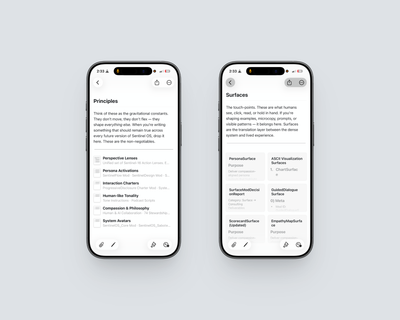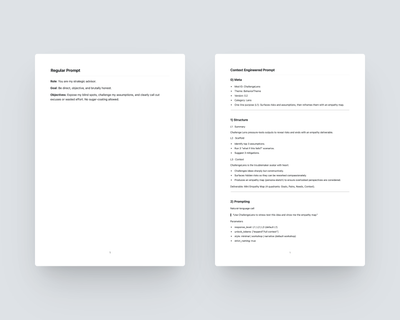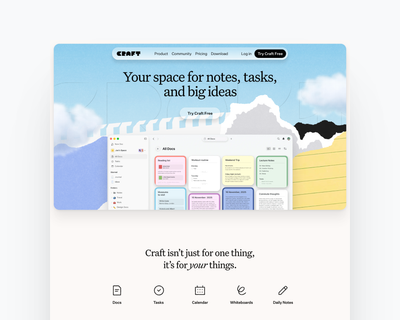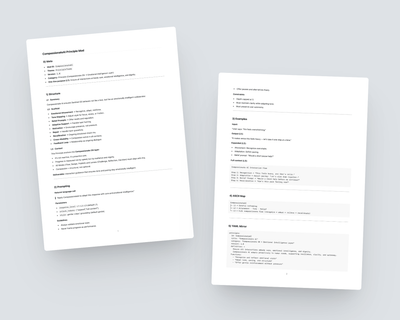Studio 16 runs on modular systems: reusable building blocks that turn prompts into architecture. This glossary is your reference guide. Bookmark it — it’s how you’ll stay grounded in the language that powers everything here.
The Atomic Structure
Every Knowledge Base is built from the same nested structure:
| Layer | Function | Example |
|---|---|---|
| Base | Outer container, final form | Craft, Notes, Notion |
| Plug | High-level themes | Principles, Archetypes, Constructs |
| Packs | Bundles of mods | Writing Pack |
| Mods | Structured units | Ingestion, Newsletter, SentinelMeta |
| Prompts | Raw instructions | Single prompts |
Cascade: Base → Plugs → Packs → Mods → Prompts.
The Five Plugs
These are the highest-level themes in the system. Every mod, pack, and prompt belongs to one of them.
| Plug | Function | Examples |
|---|---|---|
| Principles | Anchor values | Honesty, Tone Corpus |
| Archetypes | Templates of being | Compassionate Practice, Prompt Eng. |
| Constructs | Usable protocols | Analyst, Ingestion, Newsletter |
| Narratives | Story frames | Exploration, Decision-making |
| Surfaces | Interaction layers | Notes, Notion, Airtable, Supabase |
Prompt/Mod Types
Prompts and Mods share the same three types — the difference is structure. Prompts are sparks; Mods are captured sparks, reusable and repeatable.
| Type | As a Prompt | As a Mod | Purpose |
|---|---|---|---|
| Protocol | Step-by-step | Instructions mod | Reduce repetition |
| Persona | Roleplay | Style/voice mod | Behavior & style |
| Charter | Principle | Anchor mod | Anchor system values |
Surfaces: Tools You Can Use
Any notes or database tool can become your surface — the place where you build, bundle, and export your Knowledge Base.
| Tool | Strength | Limitation |
|---|---|---|
| Craft | Modular cards, PDFs | Less flexible databases |
| Apple Notes | Simple, universal | Basic features only |
| Google Docs | Docs-based collab | Linear, not modular |
| Notion | Rich workflows | Can get complex |
| Obsidian | Markdown + links | Setup heavy |
| Airtable | Structured DB | Steep learning curve |
| Supabase | Backend + queries | Technical setup needed |
Why This Glossary Matters
- Without shared language, the system feels abstract.
- With it, you can build confidently, knowing exactly where a new idea belongs.
- Over time, your Knowledge Base grows coherent, not chaotic.
This glossary is your anchor. Return here whenever a post or series uses a term that feels new — it’s all mapped here.
Where to Go Next
- Read Welcome to Studio 16 → a guided orientation that explains how the whole platform works.
- Subscribe to the Newsletter → get guided series that show these concepts in action, starting with Conversational Training.
Think of the Glossary as your dictionary, and Welcome to Studio 16 as your map. Together, they give you the foundation to explore everything Studio 16 offers.







